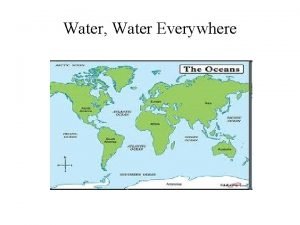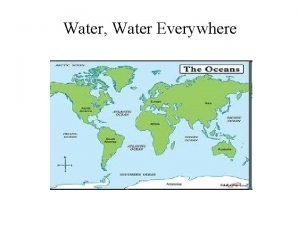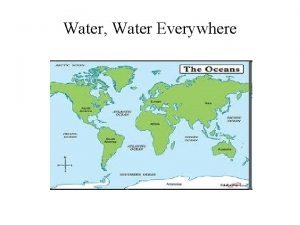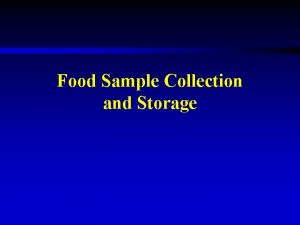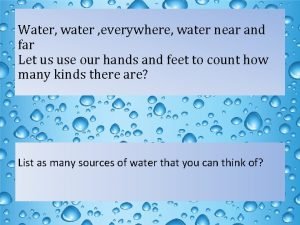Water Collection and Storage Water water everywhere Why















- Slides: 15

Water Collection and Storage Water, water, everywhere!

Why bother? How are we doin? Where it goes Options for reduction Greywater How much rainwater? Rainwater storage, large, small & other options Siting your tank Rain water harvesting Water audit What we will be talking about

Australia is a drought country (ie droughts will recur) Average 164 kilowatt hours person per year to supply and treat water Water costs money! Things will be made worse by global warming/peak oil Why bother?

Average Annual Household Usage >300 k. L/year = High to very high usage 200 – 300 k. L/Year = Around the national average 100 – 200 k. L/Year = low usage but more improvements possible <100 k. L/Year = Very low water usage Daily consumption (litres) x 365/1000 1 k. L = 1000 litres How are we doin’?

Where it goes

Demand Management (Not within the scope of this talk) Grey water Rainwater Options for Reduction

Do not store: use immediately Under mulch only No contact with food crops Shower and laundry only – not kitchen Can allow a build up of sodium Filter is a must Greywater

Measure the area of: ◦ House ◦ Garage/carport ◦ Sheds ◦ Add together to give total catchment in m 2 Multiply by total yearly rainfall in mm (for Sydney 712 mm/year average) = litres/year possible rainwater harvest Multiply by 0. 85 to allow 15% contingency How Much Rainwater?

Gal Steel Aquaplate Reinforced concrete Fibreglass Polytanks (“plastic”) Flexible bladders Rainwater Storage (Large)

Steel 205 litre drums Closed head plastic drums Open head “pickle barrels” IBCs Wheelie bin Garbage bin (Steel or plastic) Wine barrel Improvised & Second hand (Small)

Swimming pool Converted bath tub fishpond Tyre pond Fence tanks Swales – store water in the soil Other Options

Solid base Accessible Off the ground or uphill Close to point of use Where space is available Close to existing downspouts Siting your tank

Direct to the tank First flush Rainwater diverter Rainwater Harvesting

Identify household water uses Recording over a week the amount of water you use Validate your workings against records Identify any leaks Work out potential rain harvest Work out how much greywater is available Work out how much tank capacity you need The Water Audit

For more details check our website
 Everywhere you go everywhere you look
Everywhere you go everywhere you look A paved blacktop parking lot was built
A paved blacktop parking lot was built Clil water
Clil water Unit 11 water water everywhere
Unit 11 water water everywhere Hey bye bye
Hey bye bye Water and water and water water
Water and water and water water Transferring of data from auxiliary storage to main storage
Transferring of data from auxiliary storage to main storage Primary storage and secondary storage
Primary storage and secondary storage Landsat collection 1 vs collection 2
Landsat collection 1 vs collection 2 Types of documentary collection
Types of documentary collection A named collection of data on a storage medium
A named collection of data on a storage medium Storage device that uses laser technology
Storage device that uses laser technology Secondary storage provides temporary or volatile storage
Secondary storage provides temporary or volatile storage Object based and unified storage
Object based and unified storage Dont ask why why why
Dont ask why why why Characteristics of infatuation
Characteristics of infatuation


















